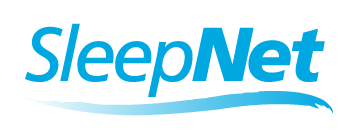Assisted Devices Program
Please read below for commonly-asked questions relating to the Assisted Devices Program.
What does the Assisted Devices Program do?
The Ministry of Health and Long-Term Care, Assisted Devices Program (ADP) pays for continuous or autotitrating positive airway pressure devices for people who have been diagnosed by a sleep physician as having obstructive sleep apnea syndrome.
Who can apply?
Any Ontario resident with a valid Health Card issued in their name who has obstructive sleep apnea syndrome and meets medical criteria specified by the Assisted Devices Program.
How do I apply?
You will be referred to a registered ADP sleep clinic by your family physician where you will undergo diagnostic tests to determine the underlying cause of your disruptive sleep by a physician that specializes in sleep medicine. If you meet the medical eligibility criteria and your sleep physician confirms that you have obstructive sleep apnea syndrome, an ADP application will be completed. Your sleep physician and sleep clinic staff will decide what type of equipment you should use.
What devices are covered under this program?
Positive Airway Pressure (PAP) systems, including:
- Continuous Positive Airway Pressure (CPAP) systems
- Auto-Titrating Positive Airway Pressure (APAP) systems
- Bi-Level Positive Airway Pressure (BIPAP) systems
How much will ADP pay?
ADP will pay 75% of an ADP approved price. You will be charged for the remaining 25%.
If you are receiving social assistance benefits from Ontario Works (OW), Ontario Disability Support Program (ODSP), ADP will pay 100% of an ADP approved price.
Will my health insurance company cover my share of the cost?
Many will. If you have private medical coverage, check with your insurer or agent to see if they will pay your share of the cost.
Where can I get the CPAP or APAP equipment and supplies?
From any respiratory vendor registered with ADP. These vendors can bill ADP directly for the 75% portion of the cost of your equipment.
What type of equipment and supplies are included in the ADP approved price?
The ADP provides funding assistance for a complete CPAP or APAP system. For ADP purposes, a CPAP or APAP system consists of a CPAP/APAP device, heated humidifier, basic mask and headgear, carrying case, 6 ft tubing, all necessary caps and filters, power cord and patient instruction manual.
If a client requires items that are not part of the CPAP or APAP system, the respiratory vendor may invoice the client for 100% of the cost of these items. For example, a specialized mask and headgear may be better suited to your needs and can be purchased separately from the basic CPAP or APAP system.
Who will show me how to use the CPAP device?
The vendor's health professional will assist you in explaining how the CPAP device functions and how to carry out the routine care and cleaning of the system. Please refer to your Client Instruction Manual, provided by your respiratory vendor, for specific instructions and detail. During the initial instructions, the health care professional will determine if the basic mask and headgear is appropriate for you. If not, you will be fitted for the mask and headgear best suited to your needs. This initial instruction period may take up to one hour or less.
I have been offered an extended warranty and service package at an extra charge. Must I purchase these additional services?
The ADP expects all respiratory vendors registered with the ADP to ensure that their clients are instructed in the appropriate and safe use of the equipment. All CPAP/APAP systems funded by the ADP must have a 3-year warranty. Respiratory vendors may provide additional services such as an extended warranty, yearly pressure checks and calibrations or pressure adjustments. The vendor may offer these services to the client at a cost separate from the funding support provided by the ADP.
Vendors who offer ADP clients a service package must provide the client with the option to purchase the service package separately and not as a mandatory service when purchasing the CPAP or APAP device. The initial instruction in the use and maintenance of the CPAP or APAP device is not included in service packages.
What if I need to replace my equipment?
ADP will contribute towards the cost of a replacement every five years if your equipment is no longer working and cannot be repaired. You must still meet the eligibility requirements and you will need a new ADP form signed by the doctor.
What is an ASV unit?
Adaptive Servo Ventilation (ASV) is a non-invasive ventilatory treatment option created specifically for the treatment of adults who have obstructive sleep apnea and central and/or complex sleep apnea. It's one of the newer positive airway pressure (PAP) units on the market that continuously monitors and adjust to correct the patient's breathing problem.
In one way, ASV is similar to CPAP therapy that is used in the treatment of obstructive sleep apnea, but there are significant differences.
ASV's pressure target is adjusted according to input from the patient. What that means is that the target is not a fixed value, but rather adapts to the patient's breathing patterns. Because the device continuously adjusts itself to meet the patient's needs, the discomfort often reported by PAP patients is avoided altogether since the machine's pressure changes are subtle in a way that makes the patient feel comfortable. For more information, click here.
Are ASV units also funded by OHIP?
No, not currently at this time.

